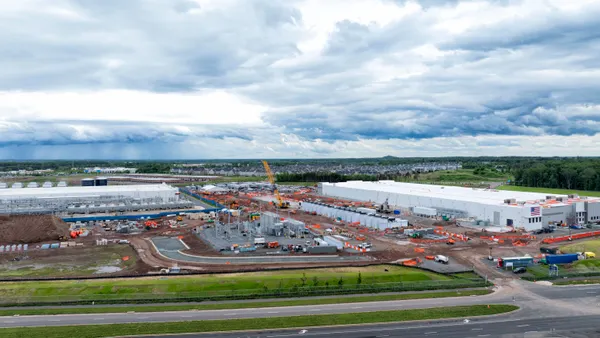On the main stage at its annual user conference last August, VMware CEO Pat Gelsinger cheekily asked Principal Engineer Joe Beda how the company could convey its commitment to Kubernetes.
"How about build it into vSphere?" Beda quickly replied.
Naturally, the two were in on the shtick. At that moment, VMware was launching Project Pacific, an effort to make its central platform, vSphere, Kubernetes native. The strategy, coupled with the rest of VMware's solutions, lets the company reduce layers of complexity for customers.
Kubernetes is reshaping the way industries use cloud computing by enabling multicloud strategies. The technology has evolved from a small open source project into a standard bearer. Gartner projects three-quarters of companies will run "containerized applications in production" by 2022.
The move towards Kubernetes-nativity is only one sign of a broader strategy playing out at VMware, one of the five companies Forrester projects will have staying power in Kubernetes-based cloud platforms.
In its approach, VMware has disrupted industry by keeping a sharp focus on flexibility and its desire to stand out in a market headed toward consolidation.
Virtualization expansion
VMware was founded near the peak of the dot-com era in 1998. It operated in stealth mode until the 1999, when it launched its flagship virtualization platform, VMware Workstation.
By the mid-2000s, flush with cash after being acquired by EMC in 2004, VMware was the "hot new company" breaking into the field, according to Glenn O'Donnell, VP and research director at Forrester. In 2016, Dell merged with EMC creating mega company Dell Technologies.
"From the start of our history we've had this uncanny ability to bridge across these cycles of innovation."

Pat Gelsinger
CEO at VMware
"The fact we're talking about them as a legacy vendor blows my mind," said O'Donnell, in an interview with CIO Dive. "Because they were the innovator that came along and changed everything."
Though the company had gotten comfortable with the success of its virtualization solution, that approach is changing, O'Donnell said. In the multicloud era, VMware is working to strengthen its market stance with an eye toward longevity.
So far, the disruption playbook is working. The company closed its last fiscal year with $9 billion in revenue, a 14% increase year-over-year.

VMware stays disruptive by following one overarching edict: focusing on the problems it knows how to solve, and doing it well.
To get there, VMware works to ensure its products allow consistent security, but embrace flexibility as its design principle, said Chris Wolf, vice president and CTO of global field and industry at VMware, in an interview with CIO Dive.
Wolf said people were prognosticating the end of VMware amid cloud computing's rapid expansion around the time he joined the company in 2014.
"I was actually excited to join [VMware], because I didn't believe cloud would be reduced to a small number of providers," Wolf said.
A series of acquisitions have further contributed to the expansion of the company's capabilities. The two most recent examples are cybersecurity firm Carbon Black and software development platform Pivotal.
"This is key to disruption: the transition of cloud from 'a place' to an operating model."

Chris Wolf
VP and CTO of global field and industry at VMware.
Project Pacific "isn’t only about running Kubernetes on our platform, but providing a standard way for partners to build in our platform too," Wolf said. "This is key to disruption: the transition of cloud from 'a place' to an operating model."
Disruption playbook
Innovating on its platform has been a key motivator for VMware. It's a strategy Gelsinger often lays out.
"From the start of our history we've had this uncanny ability to bridge across these cycles of innovation," Gelsinger said at the beginning of its annual user conference in 2018.
But how does the company decide what's worthwhile? An essential step in its innovation process has to do with partner and customer collaboration.
In 2018, the company worked with "CTO ambassadors" to determine barriers of entry into network mesh technologies. The process helped inform the launch of VMware NSX Service Mesh.
"We spend a lot of time in co-innovation work," said Wolf. "We do this so that the products we build are meeting very specific and impactful needs. This lets us ensure that what we bring to market has the right tech fit and market fit."
Through its xLabs program, VMware looks internally for innovation opportunities. Any employee can pitch ideas for potential products and, if selected, get access to financial and staffing resources.
Innovative leadership comes from the top. Through acquisitions or internal growth, O'Donnell expects CEO Gelsinger to continue to execute his vision.
"He continues to silence the critics as to what's going on with VMware," O'Donnell said. "It is a company that's continuing to innovate."














